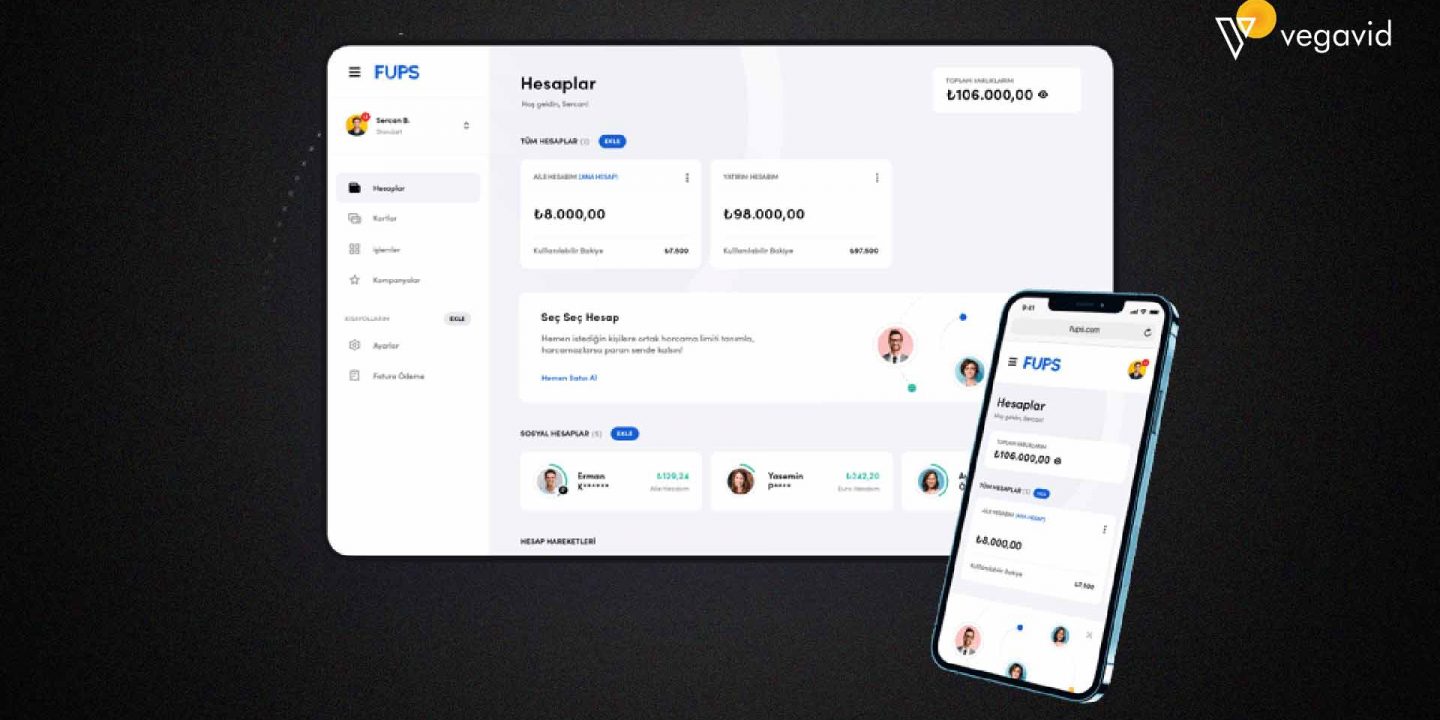
The fintech enterprise is booming with innovative apps that are transforming the manner people manipulate their money and make monetary transactions. With generation advancing at a fast pace, there is a big opportunity for marketers to develop beneficial fintech solutions. However, constructing a secured and controlled fintech software is not a smooth venture. It requires expertise in areas like finance, technology, protection, and regulatory compliance. In this blog, we will explore the step-by-step manner of a way to develop a successful fintech app from concept to launch. We will cover techniques like planning, layout, development, testing, and more.
What Is a Fintech App?
A fintech app refers to a utility that leverages generation to supply economic offerings and solutions. Fintech apps assist in modernizing conventional banking, lending, payments, and different financial offerings with the aid of integrating them into cell and digital systems. They permit customers to perform functions like shifting cash, paying bills, making investment funds, taking loans, monitoring fees, and greater rights from their cell gadgets.
Examples encompass apps supplied with the aid of digital fee offerings, virtual banks, peer-to-peer lending systems, robo-advisors, and private finance management equipment. A fintech app combines the blessings of both financial and cell technologies to offer a handy, seamless, and secure user enjoy. Its goals are to decorate monetary access, lessen transaction expenses, and permit quicker and easier monetary control for customers.
Features A Fintech App Must Have
Here are the key features a fintech app must have:
- Simplicity: The app should be intuitive and easy to use for users of all technical abilities. It needs simple navigation with minimal steps to complete tasks.
- Push Notifications: Push notifications keep users engaged by alerting them about important events, like new messages, payment confirmations, security alerts, etc.
- Personalization: The app should offer personalized experiences based on individual user’s financial behavior and needs. This improves relevance and stickiness.
- High-level Security: Sensitive financial data needs robust security measures like biometric authentication, encryption, HTTPS usage, etc. Security builds user trust.
- Data Protection: User data must be safely stored and applicable privacy laws complied with. Transparent data usage policies are important for users.
- Performance: The app should offer quick response times, smooth interactions, and reliable functionality even during high traffic/usage.
- Customization: Providing options to customize app features, layouts, profiles, etc. based on individual preferences enhances usability.
- Availability: Fintech services are often time-sensitive so the app must be available on all platforms/devices for use anywhere, anytime.
- Updates: Regular updates are necessary to fix bugs, add new features, and patch security vulnerabilities continuously.
Types of fintech apps
Here are the main types of fintech apps:
- Digital Payments Apps: These allow users to send and receive money digitally through mobile devices. Examples include Paytm, Google Pay, PhonePe, PayPal, etc.
- Digital Banking Apps: Such apps provide banking services completely online and digitally. Examples are N26, Revolut, Open, etc.
- Digital Lending Apps: These apps facilitate applying for and receiving loans digitally. Some popular examples are KrazyBee, MoneyTap, Slice, etc.
- Digital Investment Apps: Also known as robo-advisor apps, they provide automated investment management services. Examples include Tiger Brokers, Groww, INDmoney, etc.
- Consumer Finance Apps: These help manage personal finances through budgeting, expense tracking, credit reports, etc. Examples are Mint, SpendEdge, Cleo etc.
- Insurtech Apps: Apps that offer various insurance products entirely online through a digital process. Examples are Acko, EasyPolicy, Policybazaar etc.
- Crowdfunding Apps: Such apps connect donors/investors with fundraisers for various projects and ventures. Examples are Ketto, Wishberry, Milaap, etc.
Some Innovative Trends for Fintech App Development
Here are some major innovative trends currently shaping Fintech App Development:
- Blockchain Technology: Blockchain enables decentralized record-keeping of digital transactions. It is being used for applications like crypto exchanges, remittances, identity management, etc.
- Artificial Intelligence (AI): AI technologies like machine learning and predictive analysis are being used for virtual assistants, investment management, fraud detection, credit scores, etc.
- Big Data: Analyzing big volumes of transactional and behavioral data helps deliver more personalized experiences and new product innovations.
- Wearable Payments: Apps are enabling payments via smartwatches and other wearable devices for even greater convenience.
- Embedded Finance: Other industries are integrating financial services directly into their ecosystems and apps.
- Open Banking: New regulations are promoting secure data sharing between banks and third-party applications.
- 5G Technology: Soon 5G networks will allow for faster, lower latency services driving innovations in areas like cloud gaming, AR/VR, etc.
- Conversational UIs: Chatbots and voice interfaces are enhancing the usability of financial apps through natural conversations.
- Microservices Architecture: Breaking down monolithic apps into independent, interchangeable modules speeds up development.
Technology stack used to develop a fintech app
Here are the main technology stack options for developing a fintech app:
- Native App Development: Developing separately for each platform (Android, iOS) using their respective SDKs (Java/Kotlin for Android and Swift/Objective-C for iOS). Provides the best performance but is costly.
- Cross-Platform App Development: Using frameworks like React Native, Flutter, Ionic, Xamarin, etc. to write native code once and deploy it on multiple platforms. Reduces cost compared to native.
- Hybrid App Development: Combining a mobile web wrapper (usually Cordova) with HTML, CSS & JavaScript to deliver a native app feel. Easy to develop but performance may be inferior to native.
Fintech App Development Stages
Here are the typical stages involved in fintech app development:
Choose a Fintech niche
The first step in developing a fintech app is to identify the specific sector or industry niche to focus on. Some popular choices include digital payments, lending, wealth management, crowdfunding, etc. The developer needs to research the target customer base, unique value proposition, applicable regulations, and competitive landscape for each niche.
Factors like growing demand, underserved customer segments, complementary technological capabilities, and chances of disruptions should guide the selection. The chosen niche should present a good opportunity for business success while leveraging the core competencies of the development team. Thoroughly evaluating options helps narrow down to the most viable fintech specialization for the proposed application.
Deal with Compliance
Once the fintech niche is finalized, developers must thoroughly understand the compliance protocols that will apply to their app. The regulations depend on the financial services offered and the country of operation. Areas like data protection, anti-money laundering, consumer protection, lending rules, and taxation must be researched. Developers need to identify all required licenses and approvals to ensure legal operations. The app’s features and workflows then need to be designed and implemented in a compliant manner.
Regular audits help evaluate and enhance compliance on an ongoing basis. Adhering to regulations builds trust among users and avoids monetary penalties. Getting this right upfront saves a lot of reworks and compliance issues later.
Features Consideration
When starting feature planning, developers conduct exhaustive user interviews and research competitor offerings. This provides insights into necessary features and pain points faced by customers. Based on the chosen niche, technical capabilities, and target segment, developers prioritize features for the MVP.
Considerations include what provides maximum value, what motivates users to try the product, and what ensures regular engagement. Features are mapped onto user flows and experiences. Developers estimate development efforts and ensure a balanced set of features within resource constraints. Usability testing of feature prototypes refines priorities further. This approach helps define an optimal initial feature set.
Make a project team
The first step in any project is to make an effective team. The project manager should clearly define the roles and responsibilities required to achieve the project goals. Some key roles that should be included are a project manager, developers, designers, testers, and possibly a business analyst. The manager should look for individuals with the right skills, experience, work style, and availability to match each role. Diversity in skills and perspectives helps tackle challenges from different angles.
Once potential team members are identified, the manager must get approval from the appropriate stakeholders in the organization. An organizational chart should clearly outline reporting relationships and lines of communication. Finally, the manager must conduct an initial kick-off meeting to introduce the team members, assign roles, clarify expectations, discuss timelines, and start planning the project workflow. Regular communication and status updates will help the team work smoothly towards delivering the project on time.
Create the App’s Design
Creating the design is an essential first step in app development. The design team should start by understanding the target audience and key features of the app through research and discussions with stakeholders. User personas can be created to represent the different types of users. Wireframes are then drafted on paper or software to map out the information architecture and layout of screens. This includes planning the navigation flow between screens. On approval of the wireframes by everyone, interactive prototypes are made to demonstrate interactivity and usability.
Design principles like minimalism, consistency, and responsiveness are kept in mind. Screen designs are created by the visual designer following branding guidelines. Icons, illustrations, and other graphical elements are also designed. User testing of the prototypes helps refine the design according to user needs. Once finalized, the design is signed off and handed over to developers to begin coding the app.
Develop an MVP
Developing an MVP is important to validate the core concept and key features of an app in the early stages. An MVP contains only the essential functionalities that demonstrate the most important use cases of the app simply and concisely. Non-essential features are avoided to keep development efforts minimal. This allows the product to be tested in the market within a short timeframe and with lower investment.
Programming languages like React Native or Swift are used to build the basic structure and blueprint of the app. Important pages and workflows are created first along with dummy data. A lightweight database may be included. Basic visual design is applied following prototyping. Usability testing is conducted to refine the user experience. Valuable customer and user feedback can then be collected on what works well and what needs improvement before developing the full-fledged product.
Quality Analysis
Quality analysis is a critical part of the app development process. Once the app is built, it must go through rigorous testing to ensure it meets quality standards. Different types of testing like unit testing, integration testing, UI/UX testing, security testing, etc. are performed. All features and scenarios are systematically tested to check for bugs, errors, and crashes. Reviewers follow test plans and cases to validate functionality across various devices and environments.
Performance is analyzed under load to check response times. Security is evaluated against hacking threats. Accessibility is tested for compliance with guidelines for people with disabilities. Usability testing involves targeted users to evaluate learnability, efficiency, and user satisfaction. Feedback is documented as bug reports. Developers fix all issues found. Once re-tested successfully, the app is optimized for quality. This quality analysis helps deliver a robust product experience for customers.
Conclusion
Quality analysis and testing are imperative for any fintech application due to the sensitive nature of financial data handled. Bugs and security issues can severely impact user experience and trust. Once all issues are fixed, the next important steps are marketing the app effectively and tracking usage metrics to understand user behavior. Over time, additional features may be added based on data insights and customer needs to further enhance the product. With careful planning and execution, following the best practices mentioned in this blog can help you launch a compliant and robust fintech application for real-world impact. I hope this guide provides a good starting point to develop your innovative fintech solution.











